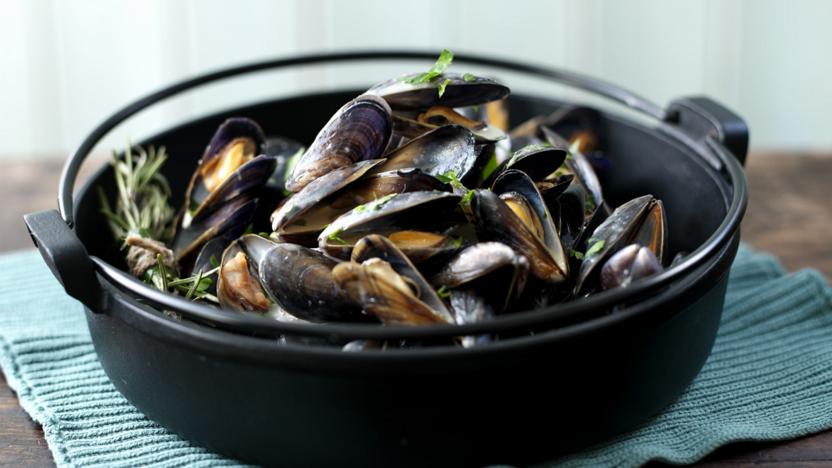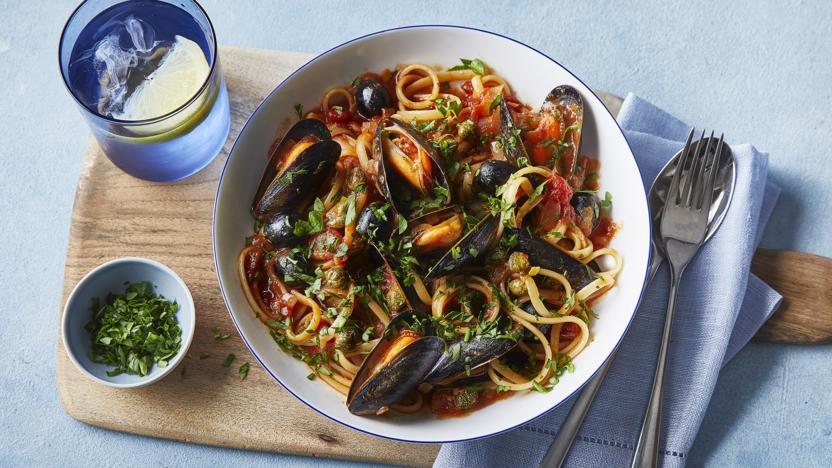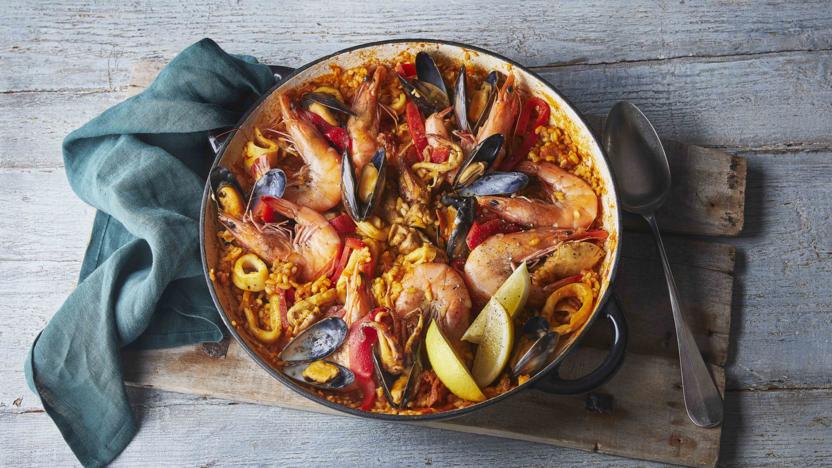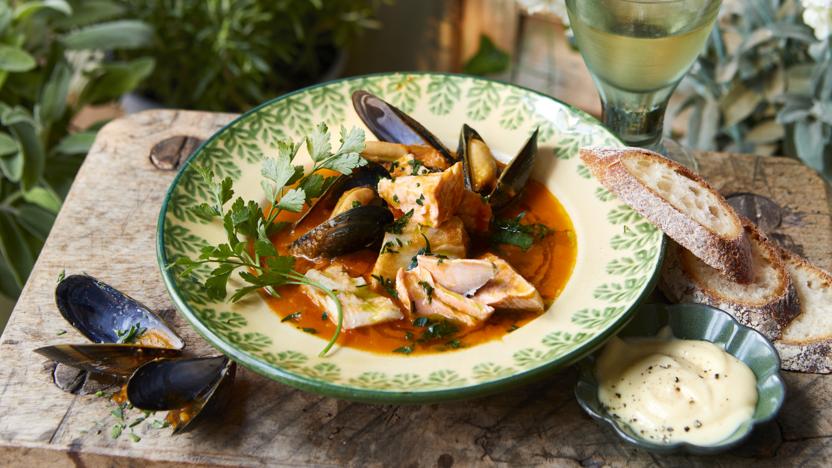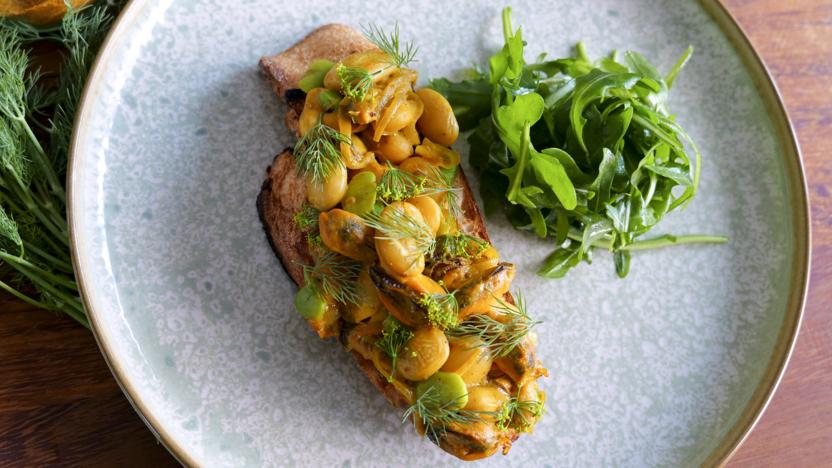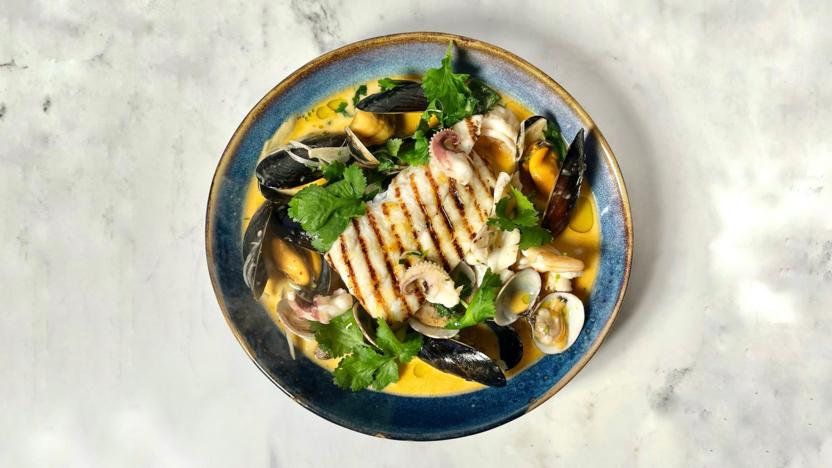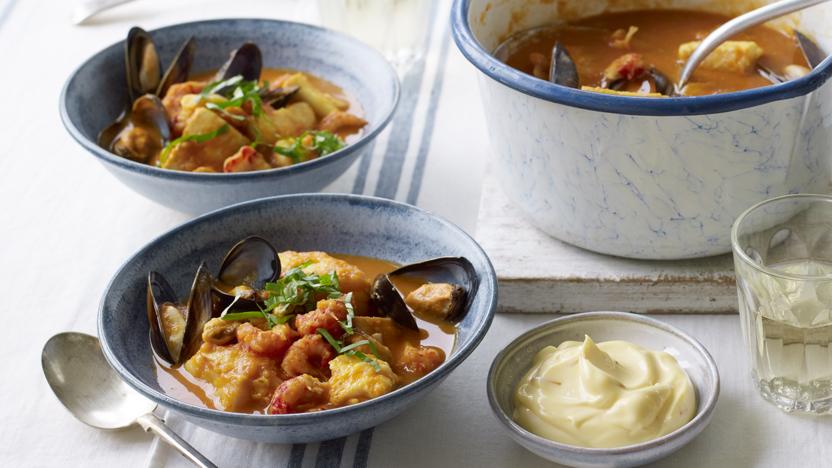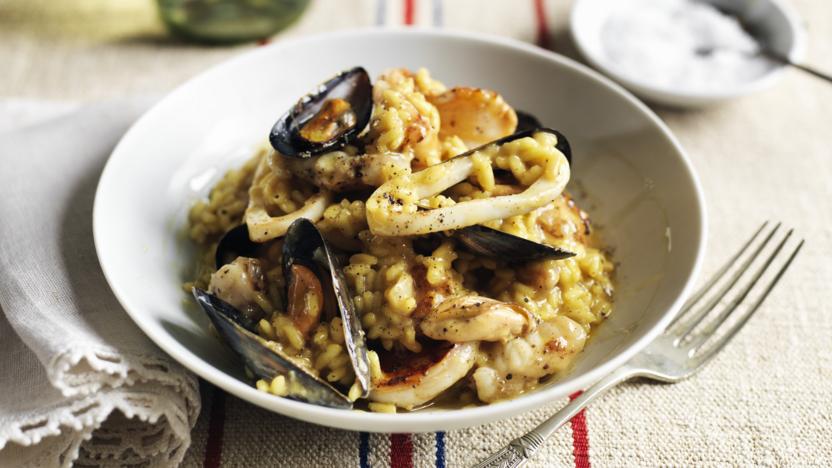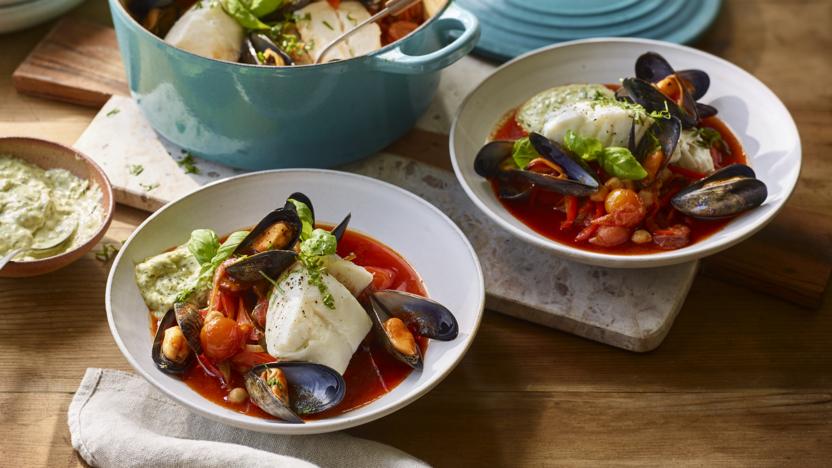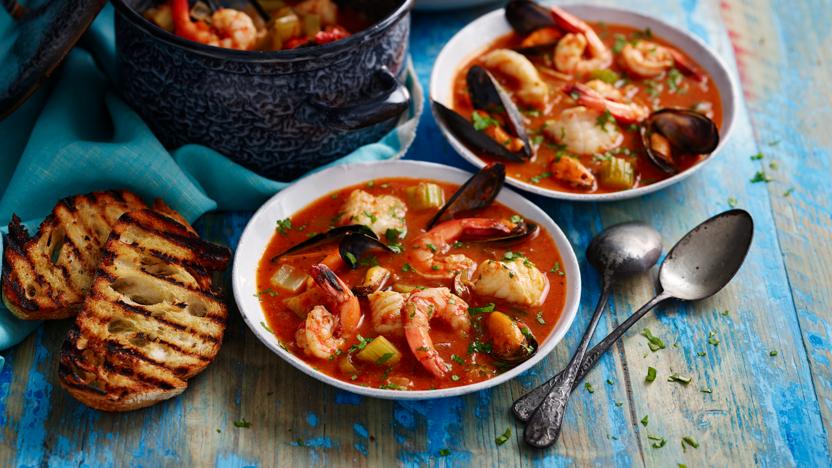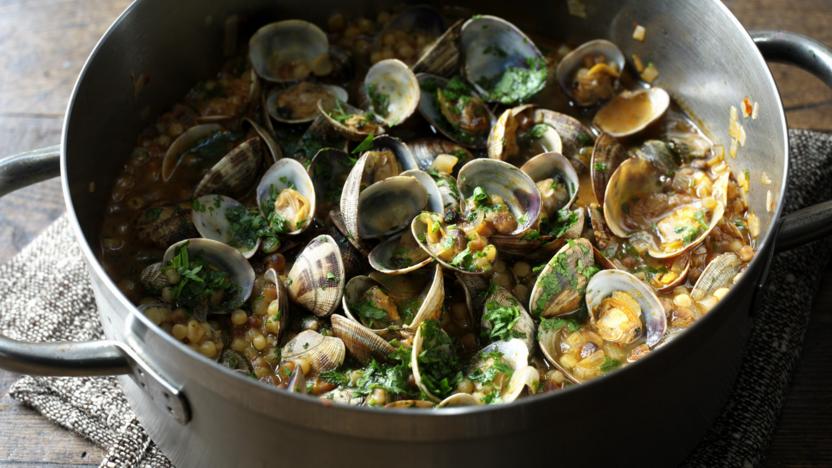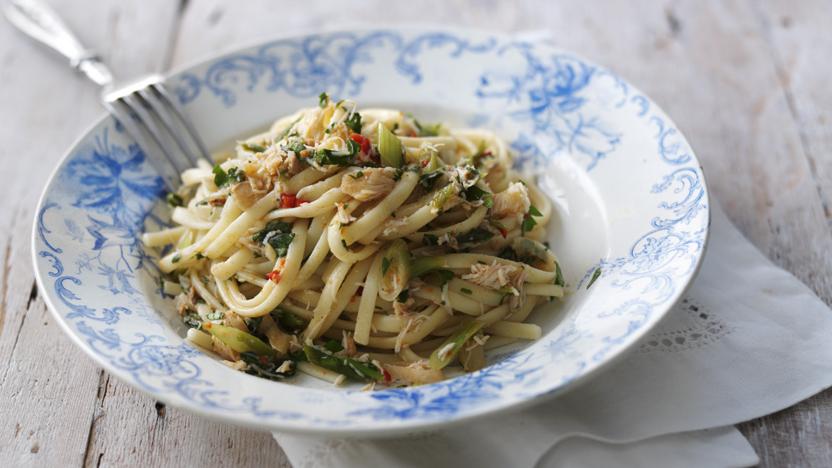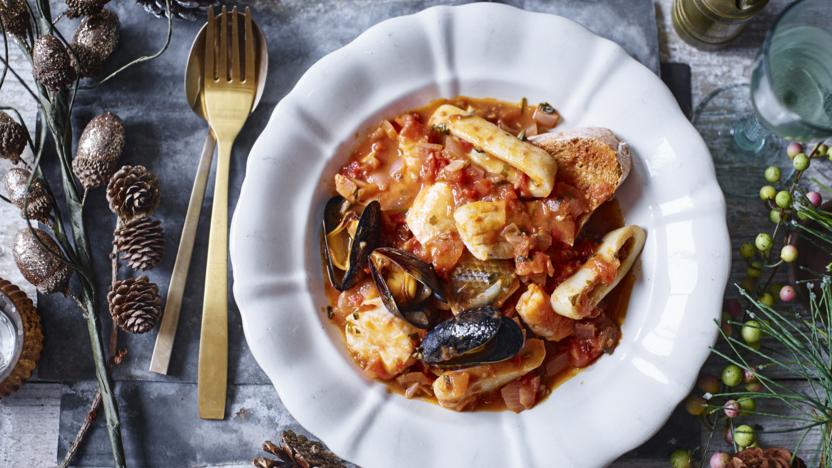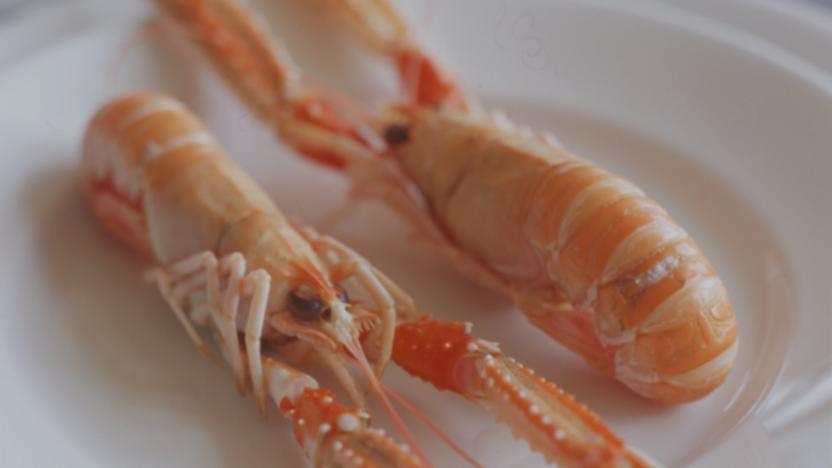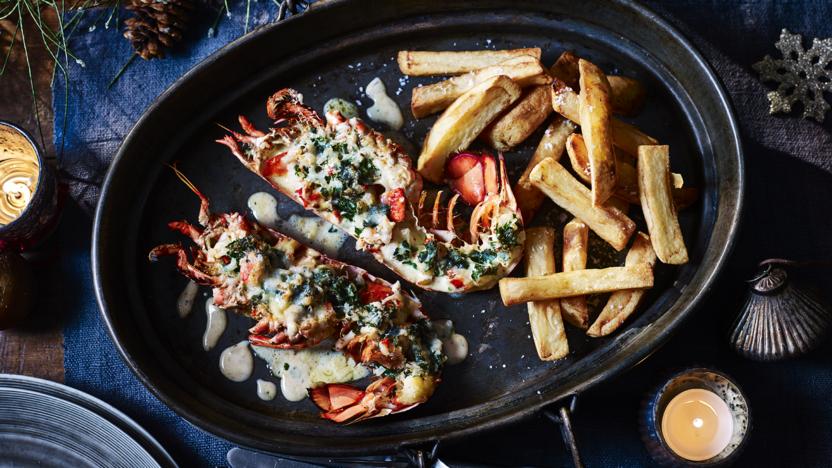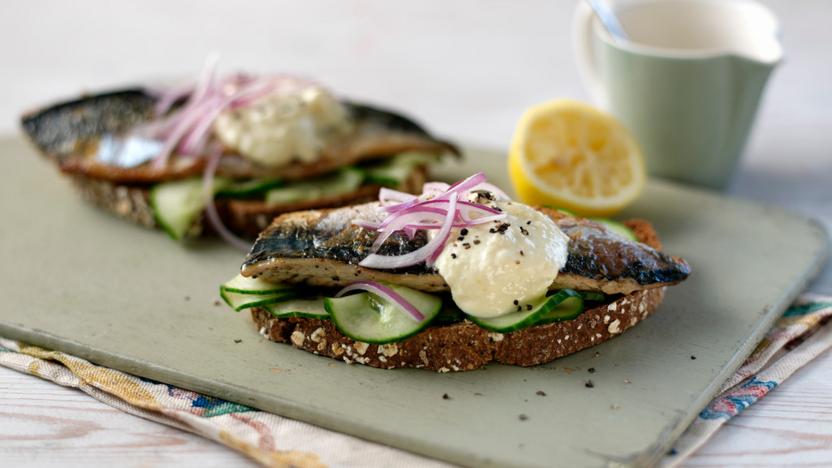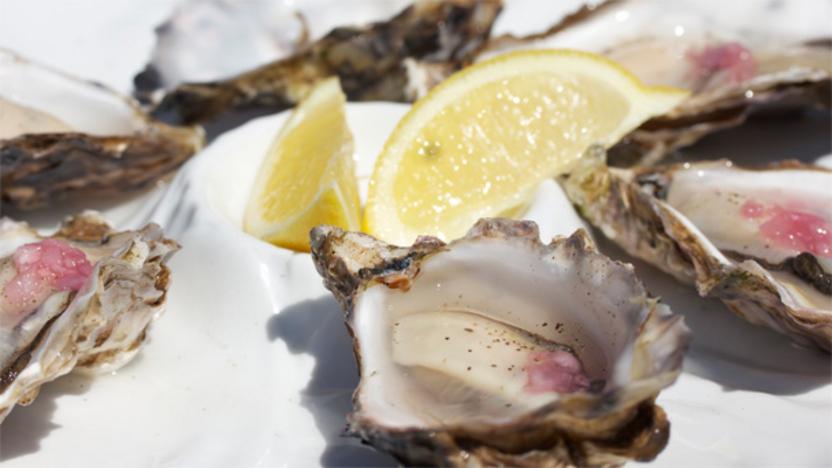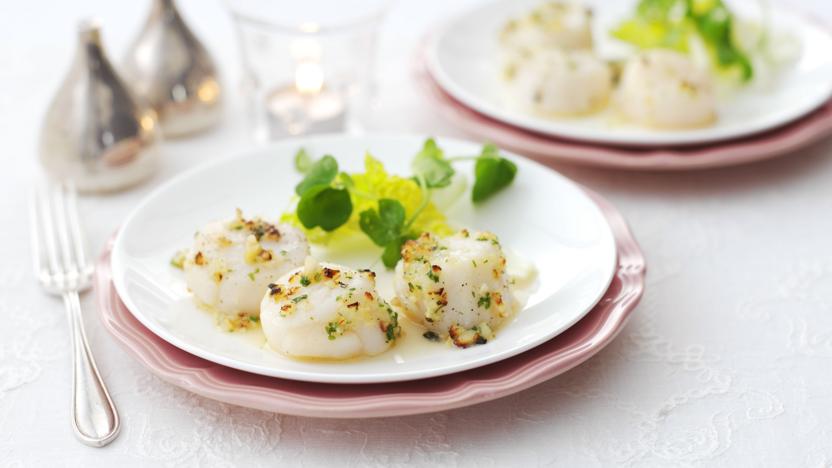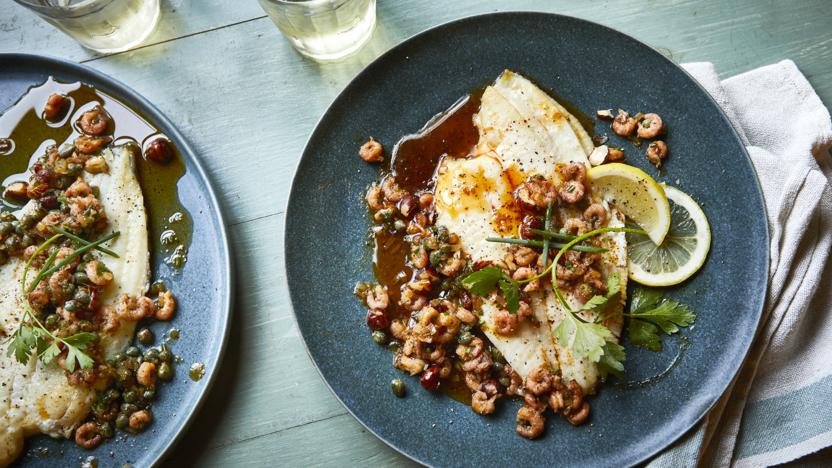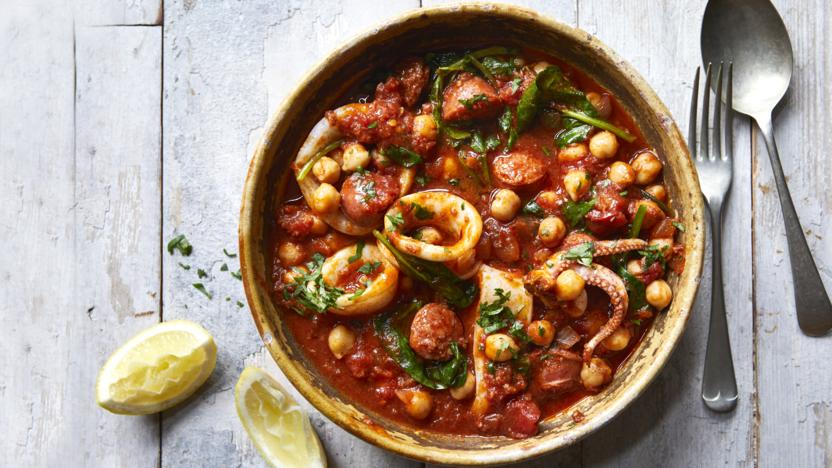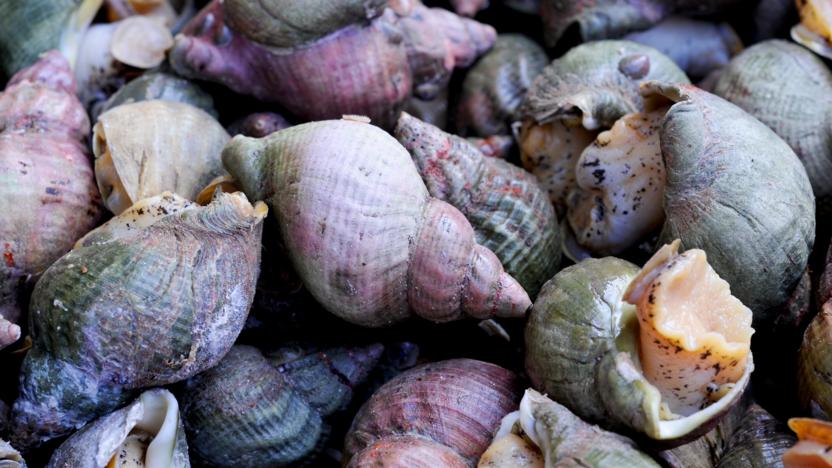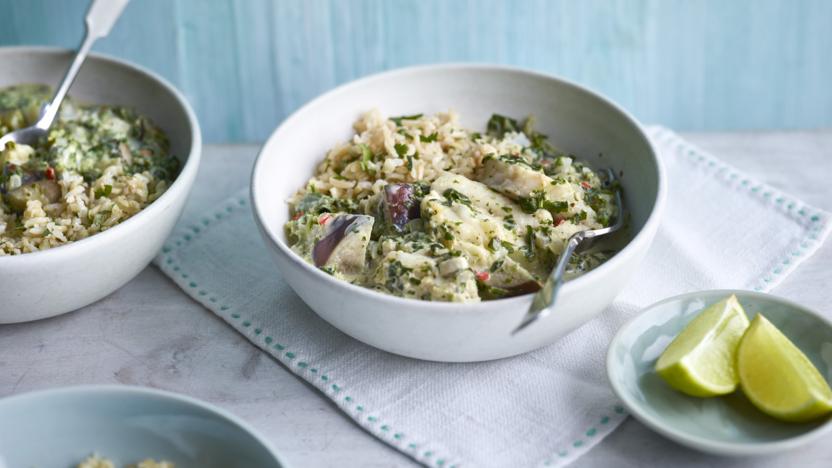Mussels recipes
Often regarded as poor man's shellfish, mussels are cheap and plentiful. In the wild, they grow on coastline rocks and stones but the majority of mussels available in the UK are farmed in suitable coastal waters. Mussels are one of the most environmentally sound types of fish or shellfish available. There's no hefty price tag and, what's more, these little creatures are in abundance.
Cook Rick Stein's impressive moules marini猫re in six simple steps, This is a simple dinner party dish that cooks in minutes once the mussels are prepped. Or scale it back for a romantic dinner for two.
More mussels recipes
Buyer's guide
If you do collect your own mussels, make sure the waters are unpolluted. They are at their best in the colder months outside the breeding season. Shop around when buying mussels and select those with tightly closed shells, avoiding any that are broken. Plump, juicy flesh and a succulent taste of the sea is what you are looking for once they are cooked. Colour is not indicative of quality - orange flesh tells you the mussel is female, while a whiter hue suggests a male.
Preparation
Unless you know how fresh they are, always eat mussels on the same day you buy them. Carefully place the blue-black mussels into a sinkful of cold water and discard any that stay open when tapped. Pull away their beards and, if you are presenting them in their shells, it's a good idea to give them a good scrub, scraping off any barnacles. A final couple of rinses will ensure a sand-free meal. Mussels need very little cooking. Place them in the bottom of a large, heavy-based pan with a small amount of liquid and turn up the heat to steam them. As soon as the shells start gaping open, you know they are ready. Don't overcook them or you'll end up with rubbery flesh. Discard any that fail to open fully. Mussels are delicious with a wide array of flavours. Steaming them in vermouth or white wine - along with shallots, garlic and a few herbs - is traditional in some European countries. Or try them with a combination of South-east Asian flavourings such as coconut, ginger, lemongrass and chilli. The cooking liquid is half the joy of eating mussels, so have plenty of crusty bread on stand-by for soaking up.
